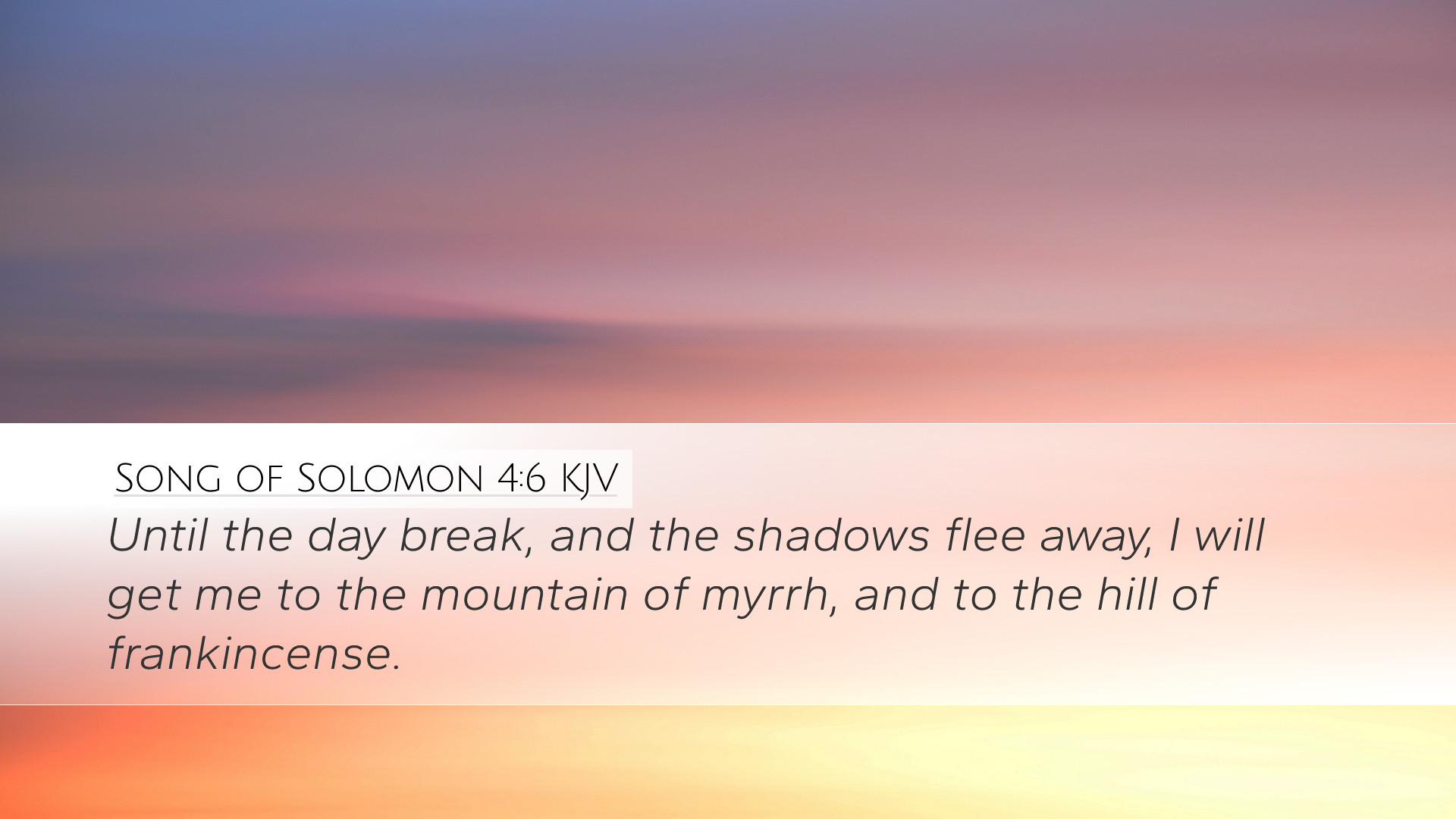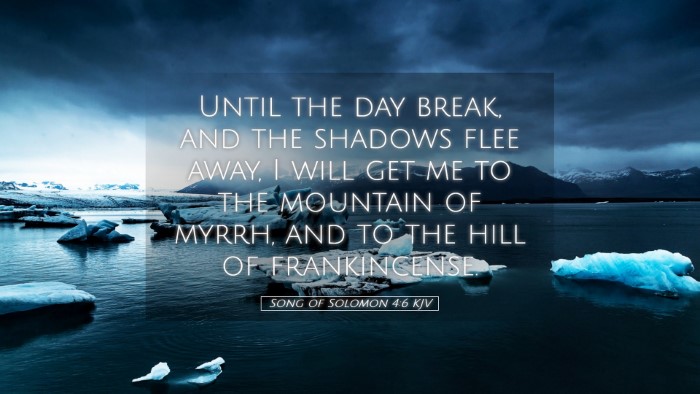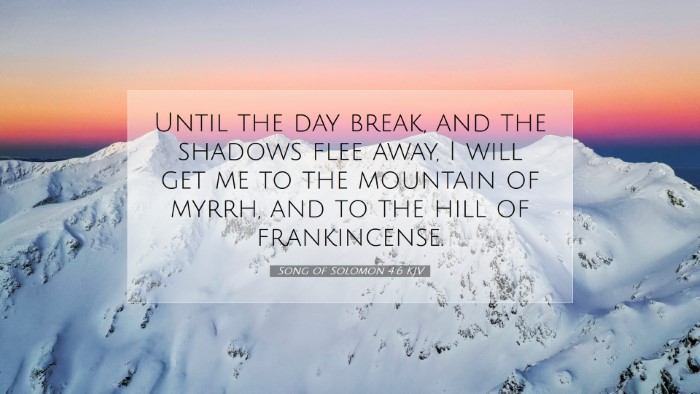Commentary on Song of Solomon 4:6
Song of Solomon 4:6 states: "Until the day break, and the shadows flee away, I will get me to the mountain of myrrh, and to the hill of frankincense." This verse, situated within the rich poetic tapestry of the Song of Solomon, encapsulates themes of longing, beauty, and the pursuit of love.
Overview of Song of Solomon
The Song of Solomon, traditionally attributed to King Solomon, is a celebration of romantic love framed within a series of dialogues between a bride and her bridegroom. Its verses are richly laden with imagery, and scholars have debated its interpretations, viewing it as an allegory of Christ's love for the Church or as a literal celebration of human love and intimacy.
Verse Breakdown and Commentary
“Until the day break”
This phrase indicates the anticipation of a new beginning. Matthew Henry emphasizes the significance of dawn in scripture as a symbol of hope and renewal. In the context of romantic love, it portrays a desire for a time when the couple can be united openly, without the obstacles of darkness that might represent sin or sorrow.
“and the shadows flee away”
Shadows can denote fear, uncertainty, or the trials that lovers face in their relationship. Albert Barnes points out that the fleeing shadows signify the removal of barriers that keep love from flourishing. The imagery suggests that the true essence of love is revealed in clarity and warmth, emphasizing the need for honest communication and transparency in relationships.
“I will get me to the mountain of myrrh”
The “mountain of myrrh” invokes a sense of elevation and richness. Adam Clarke interprets this as a metaphor for the heights of passion and devotion, suggesting that the speaker seeks a place of spiritual and emotional significance. Myrrh is often associated with sacrifice and beauty, reinforcing this concept as a space where love is pure and noble.
“and to the hill of frankincense”
Frankincense mirrors the sentiment of myrrh, as it is used in worship and signifies purity. In the context of marital love, as Henry suggests, it highlights the sacredness of the relationship and the worshipful nature of genuine love. The hill of frankincense further symbolizes an ascent in love, moving towards greater intimacy and understanding.
Thematic Insights
- Longing and Anticipation: The verse captures the depth of desire present in romantic relationships. The eagerness to reach the daybreak is a metaphorical longing for a time when love can be fully expressed and embraced.
- Transformation: The transition from night to day symbolizes transformation in love — moving from hidden emotions to public celebration. This theme resonates with pastoral counseling, encouraging couples to seek spiritual and emotional growth.
- Spiritual Pursuit: Engaging in the imagery of mountains and hills introduces a spiritual dimension to the relationship. It suggests that the pursuit of love is not merely physical but also a quest for spiritual connection.
Practical Applications
For pastors and ministers, this verse serves as a reminder of the importance of fostering environments where love can thrive and grow. Pastoral care should encourage couples to navigate the “shadows” in their relationships, ensuring they do not linger, and to pursue the “mountains” that represent their shared goals and spiritual aspirations.
Students and theologians can glean insights related to the allegorical interpretation of love in relation to God’s love for humanity. In this light, the verse can be seen as a call to seek the divine presence amidst the challenges of life.
Conclusion
In summary, Song of Solomon 4:6 encapsulates profound truths about love, hope, and the journey of relationships. By understanding the richness of its poetic imagery, believers can appreciate the significance of love as both a human experience and a spiritual pursuit. The insights from various commentaries encourage thoughtful reflection and application of these timeless truths in contemporary life.


